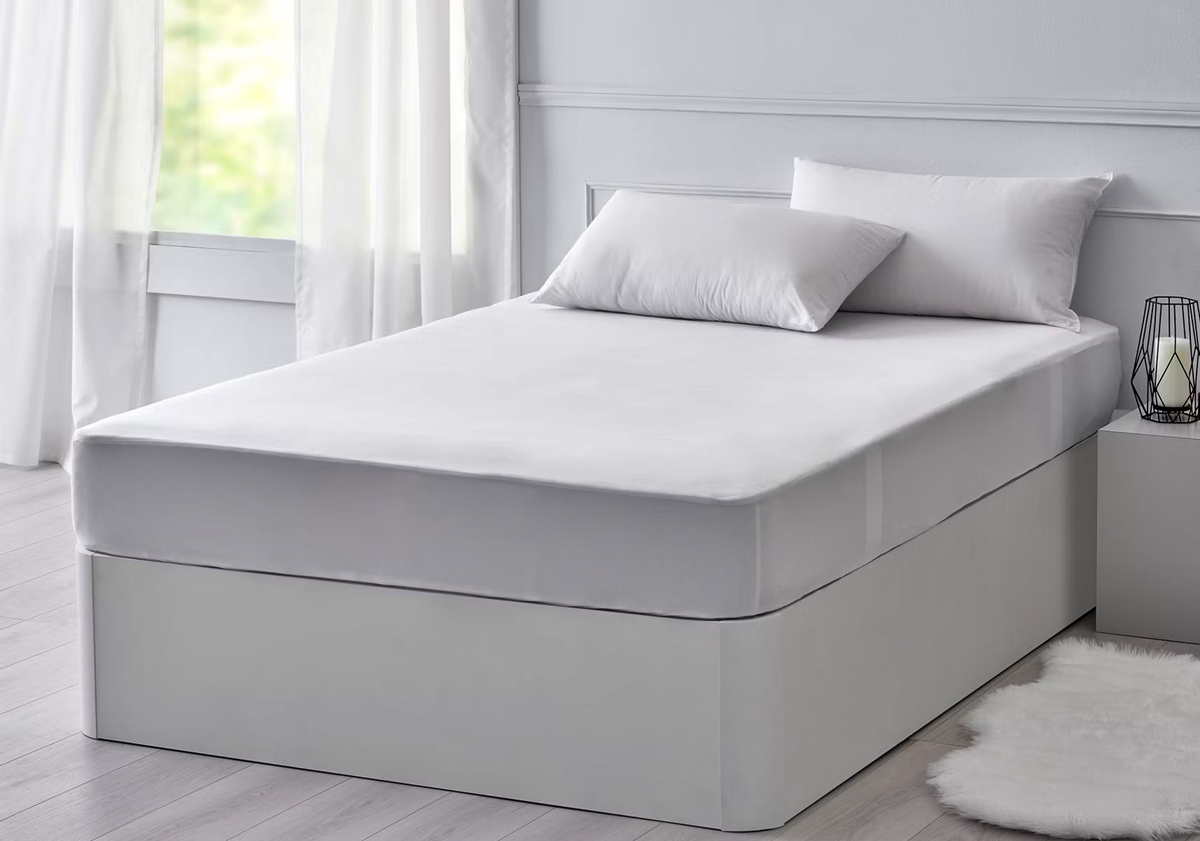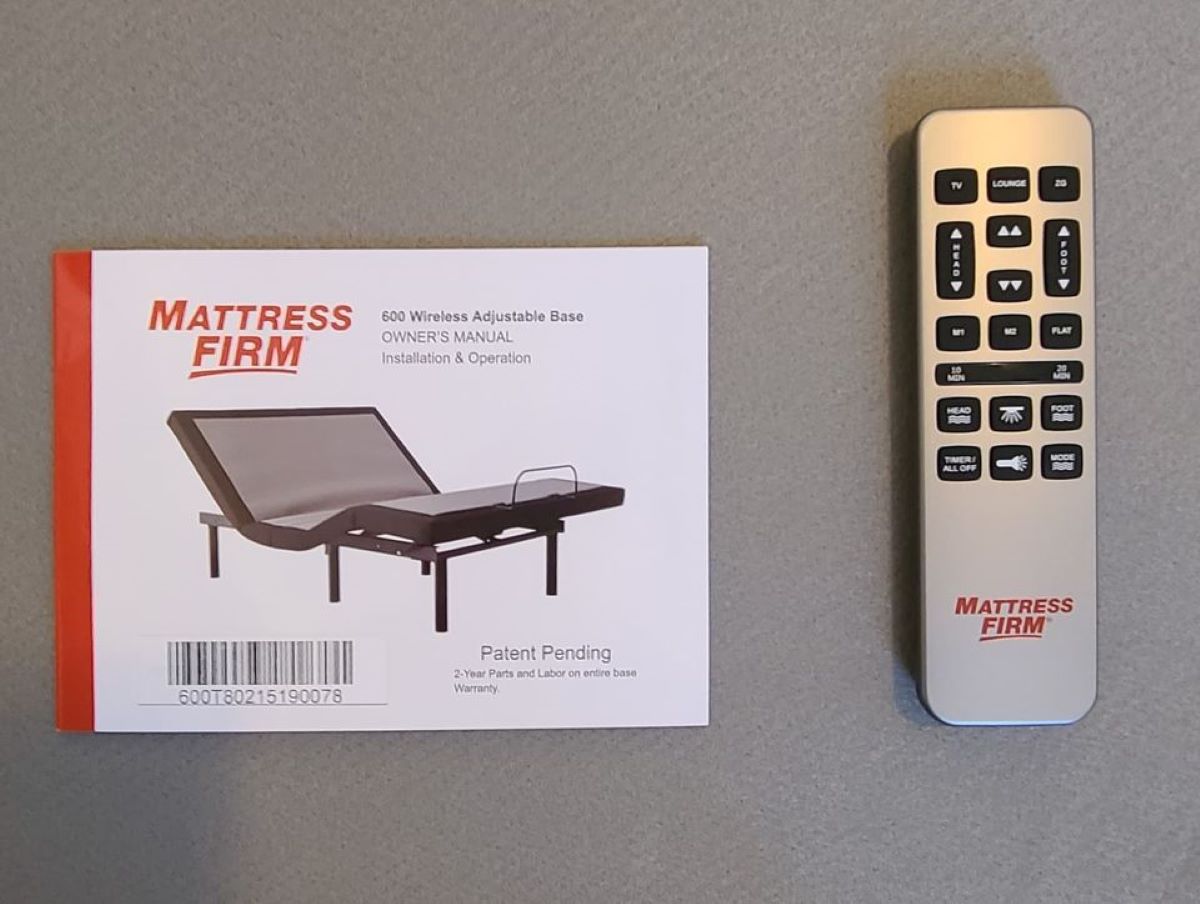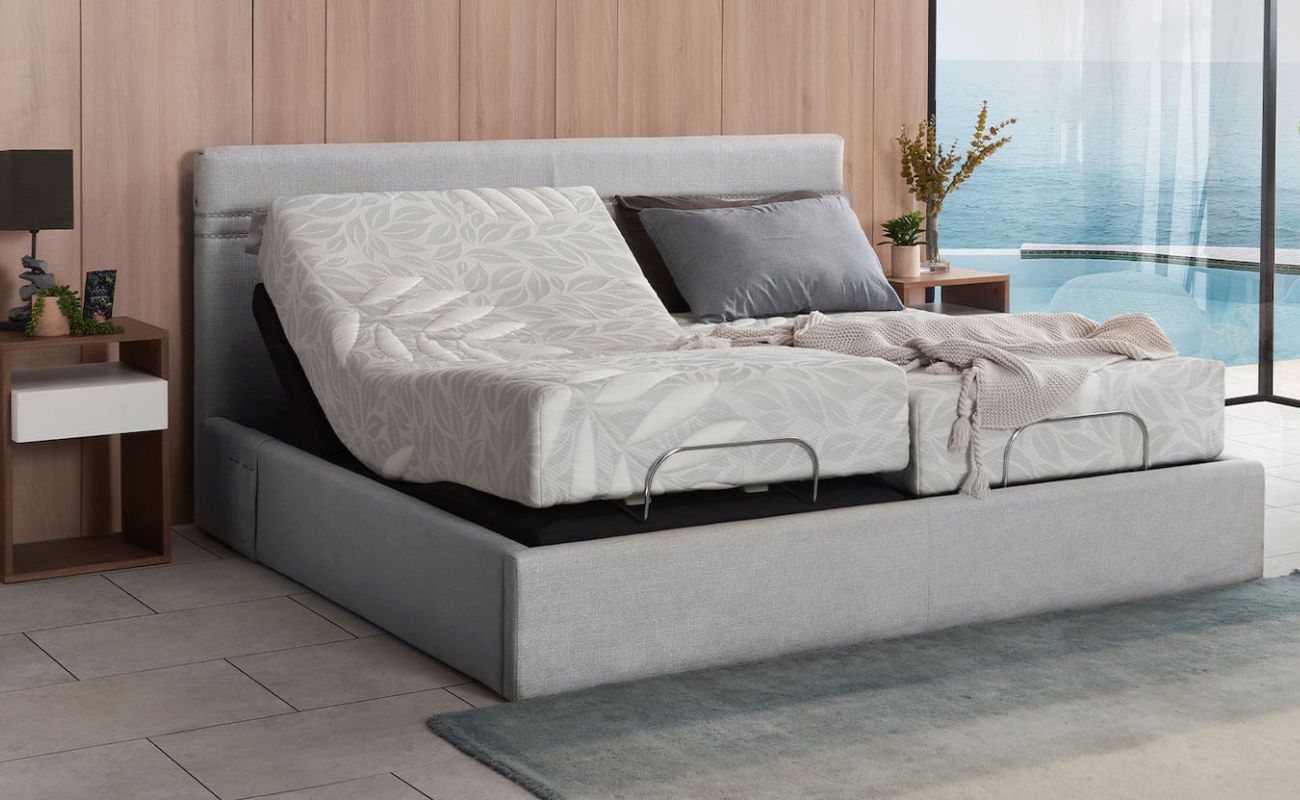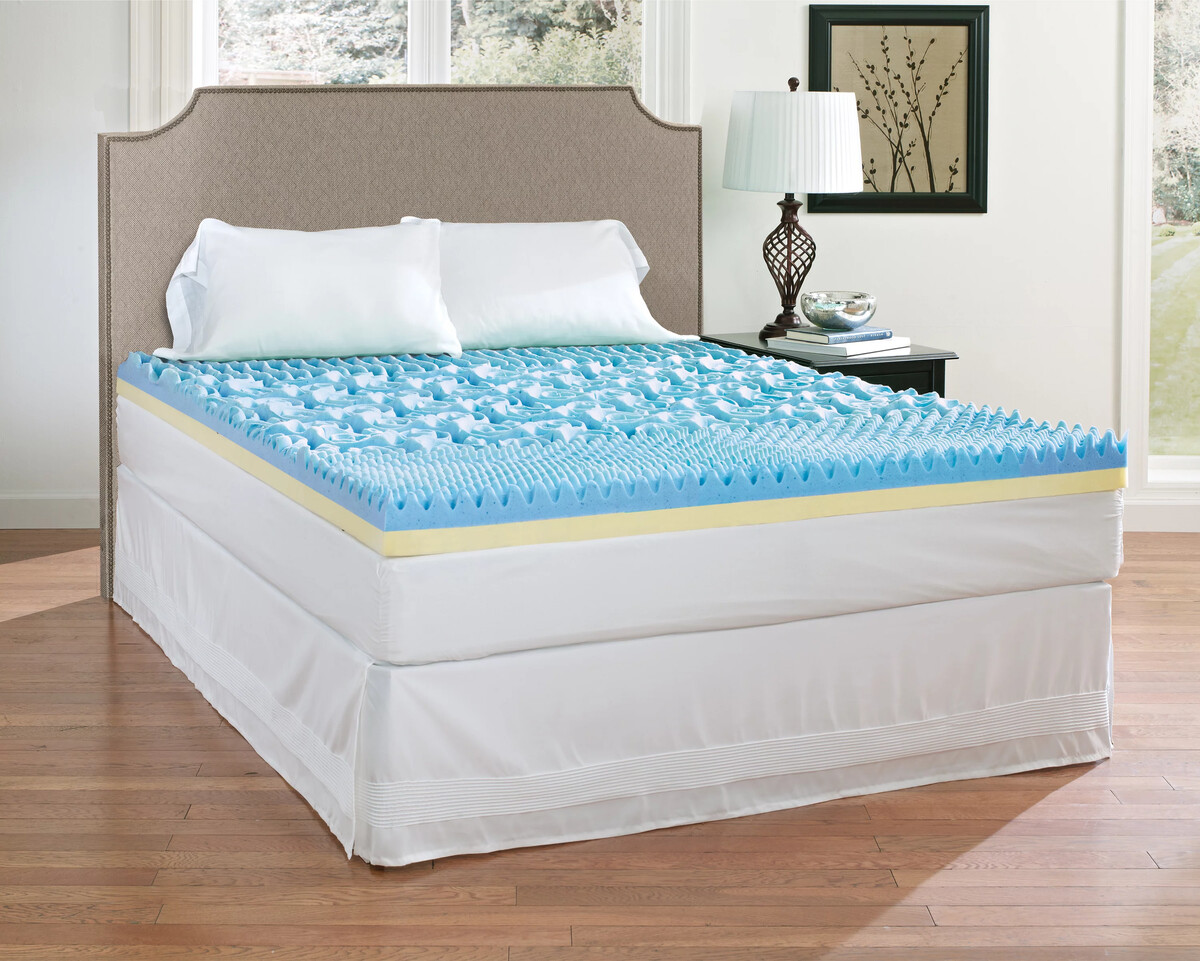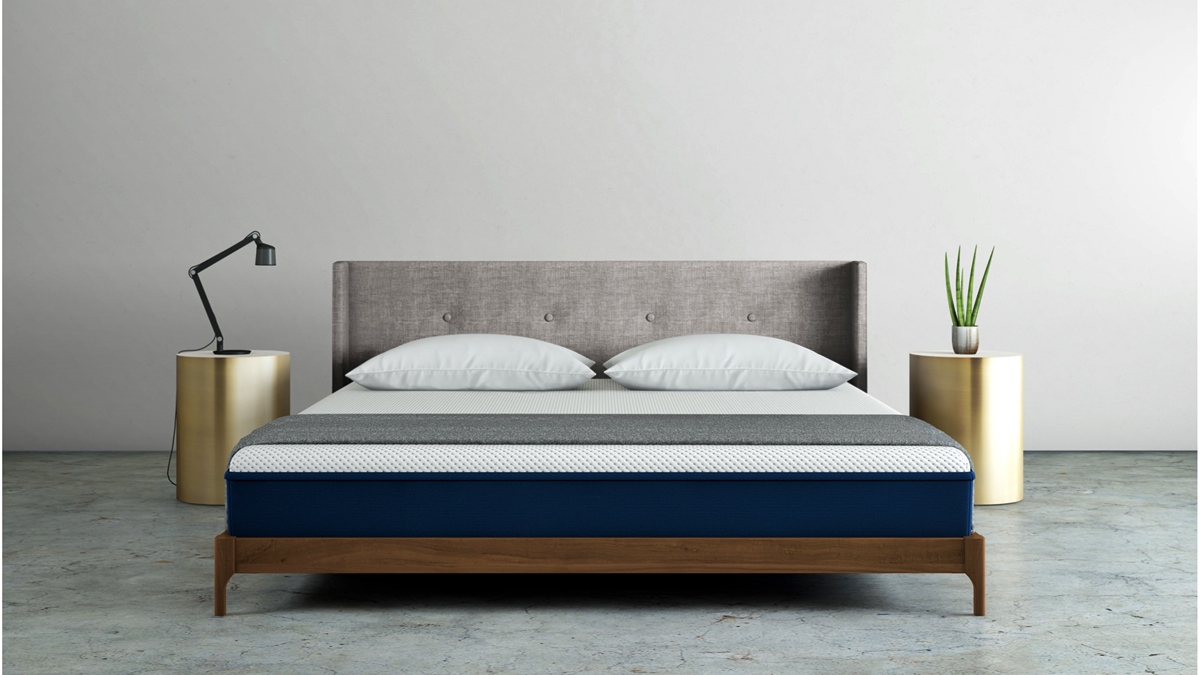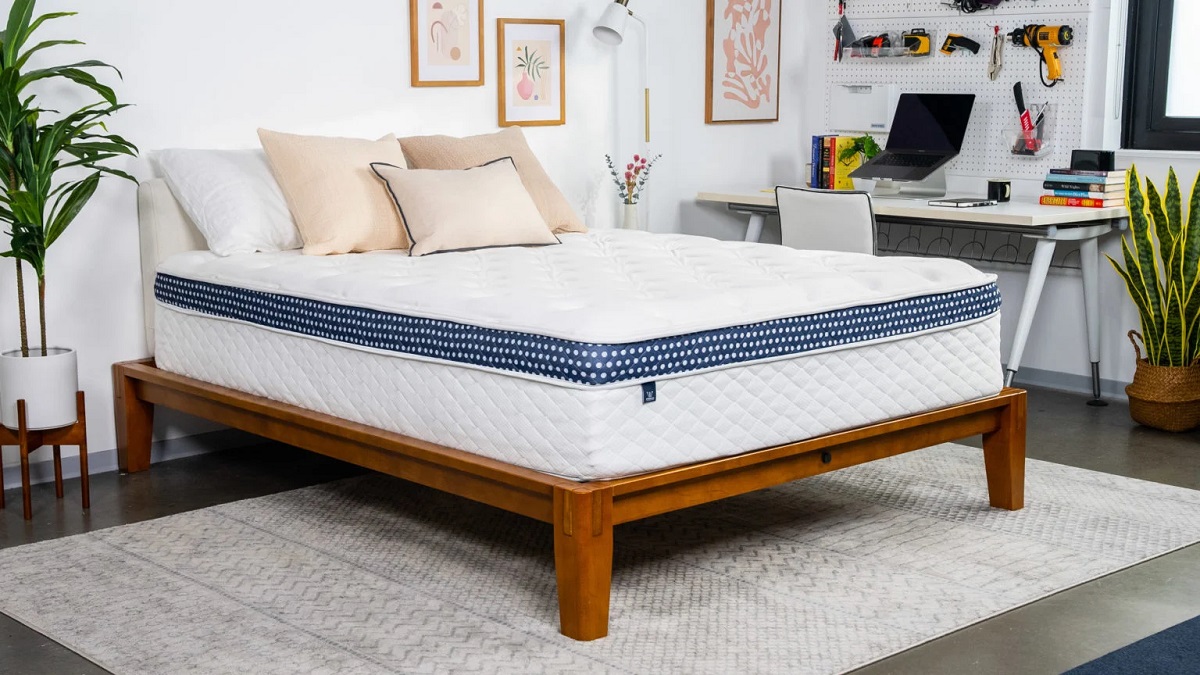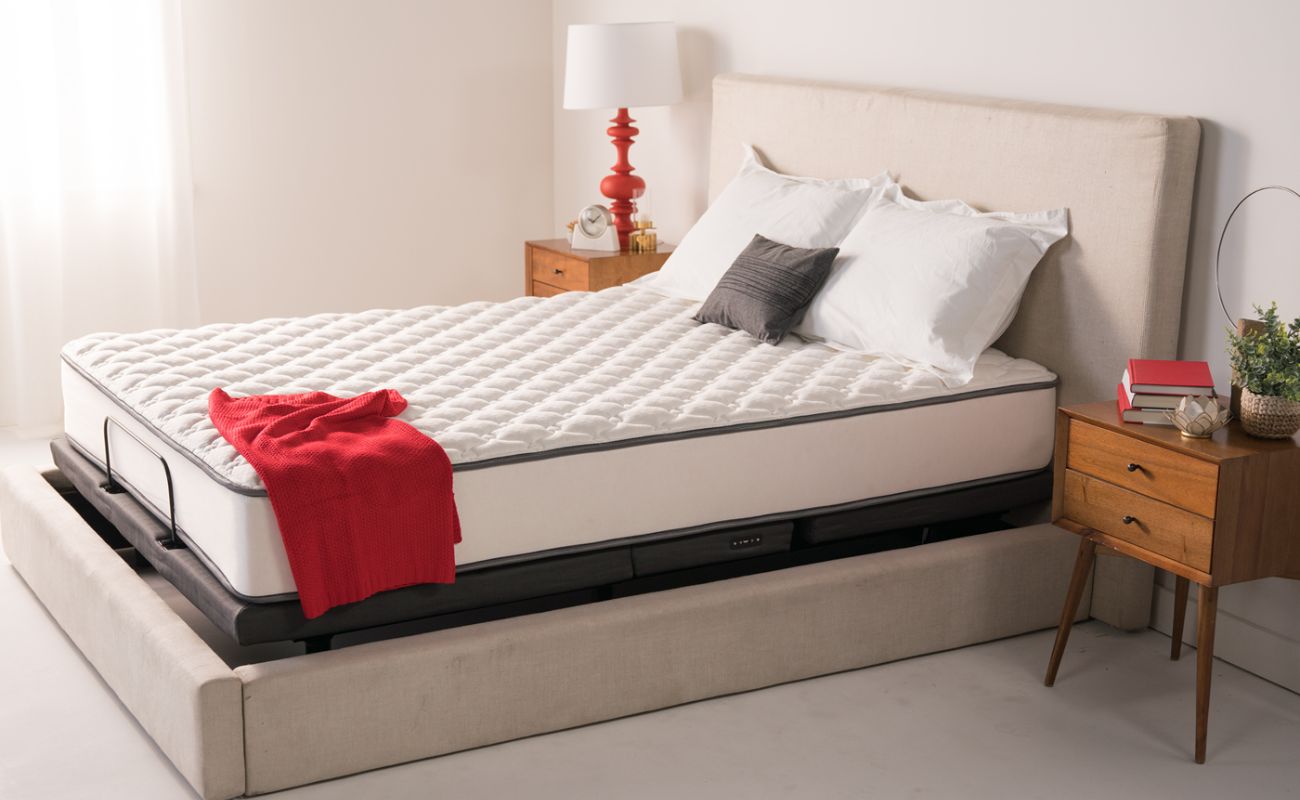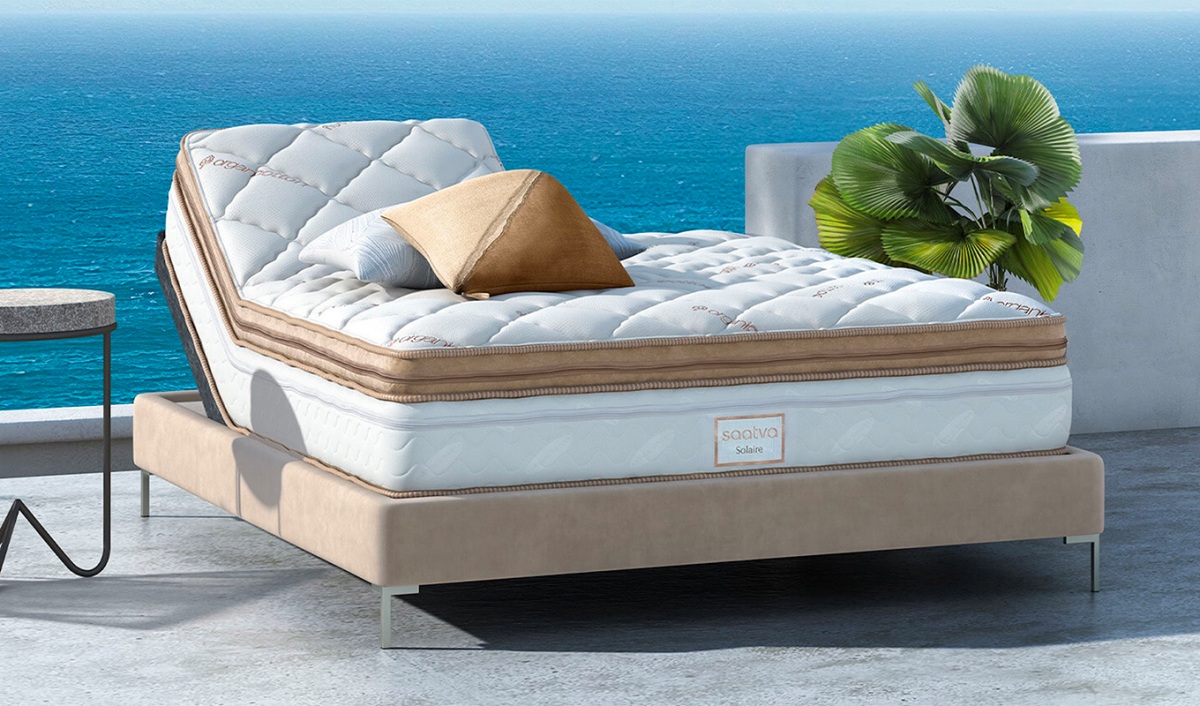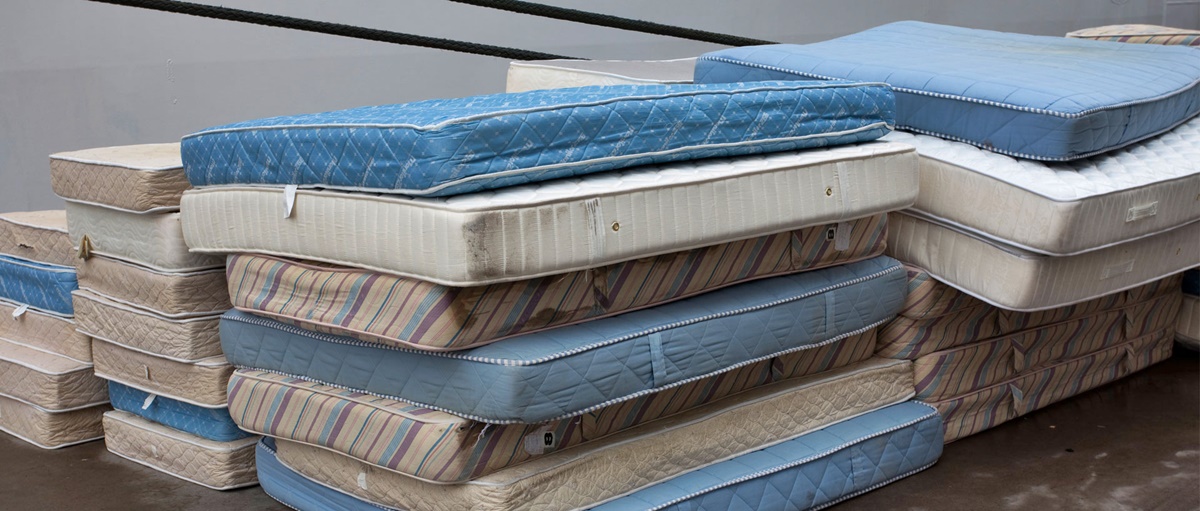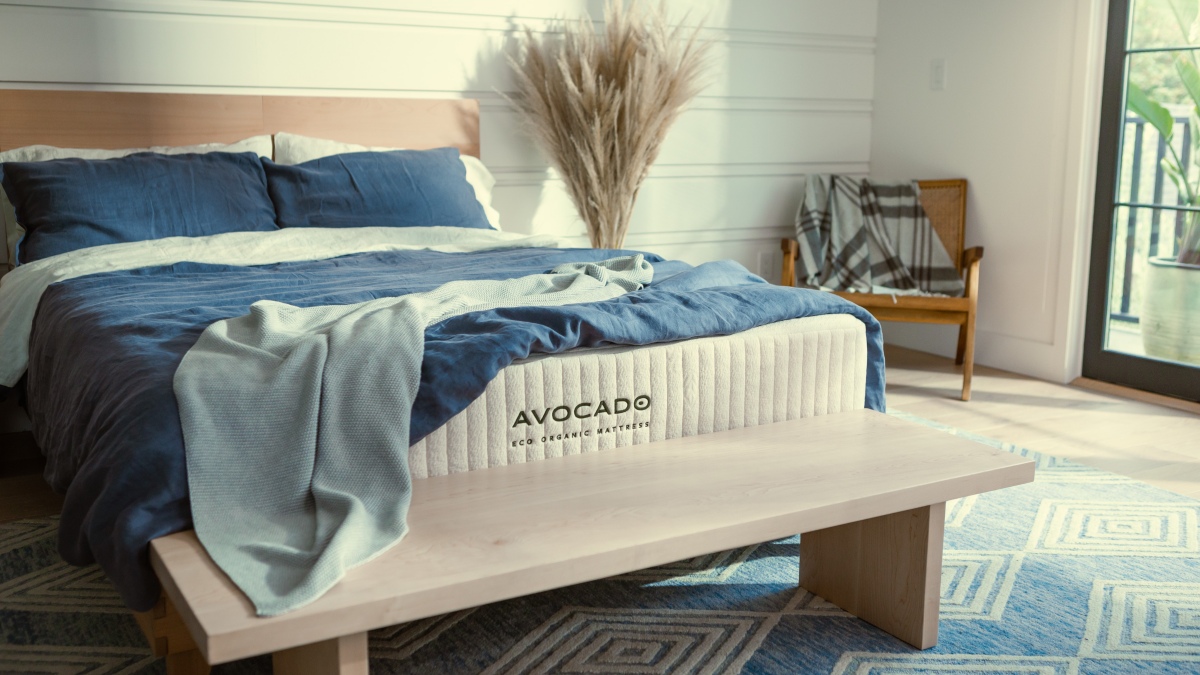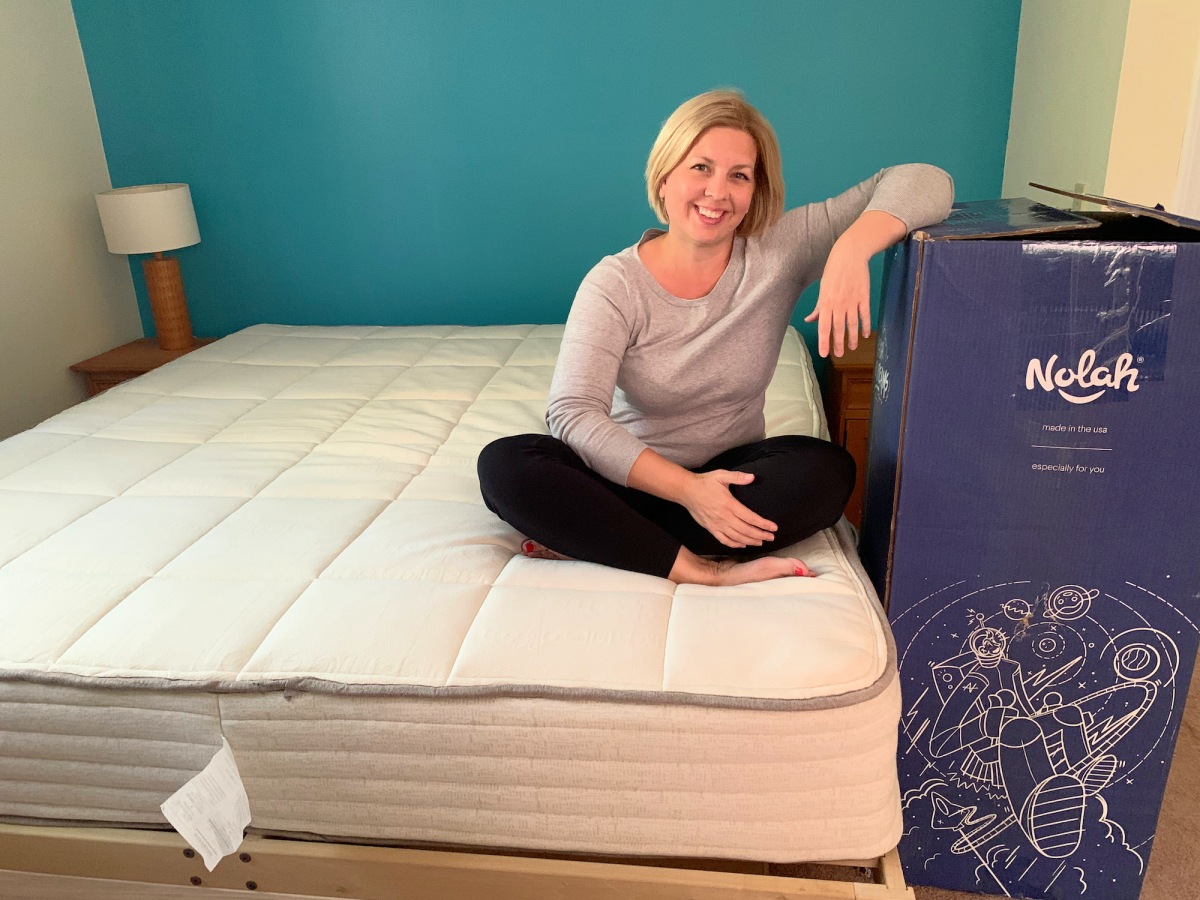Home>Furniture>Bedroom Furniture>Where Is The Nearest Mattress Firm
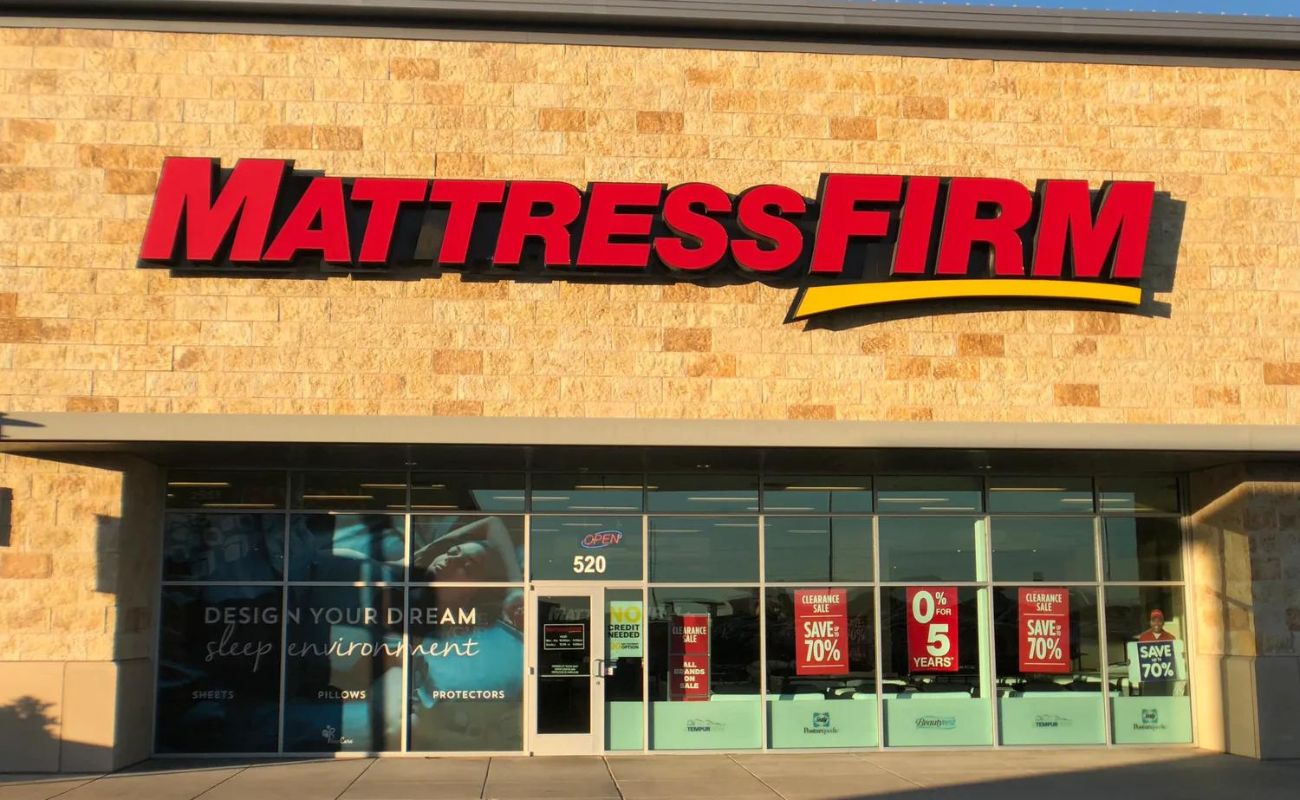

Bedroom Furniture
Where Is The Nearest Mattress Firm
Modified: January 9, 2024
Looking for bedroom furniture? Find the nearest Mattress Firm store and explore our wide selection of mattresses and bedroom furnishings. Shop now!
(Many of the links in this article redirect to a specific reviewed product. Your purchase of these products through affiliate links helps to generate commission for Storables.com, at no extra cost. Learn more)
Introduction
Welcome to the ultimate guide on finding the nearest Mattress Firm store! If you’re on the lookout for a new mattress or any other bedroom furniture, you’ve come to the right place. Mattress Firm is a well-known and trusted retailer specializing in a wide range of mattresses from top brands, ensuring you get a comfortable and restful night’s sleep.
When it comes to buying bedroom furniture, it’s crucial to have the opportunity to test out different mattresses and find one that suits your unique needs and preferences. That’s where finding the nearest Mattress Firm store becomes invaluable. In this article, we will guide you through various methods to easily locate the nearest Mattress Firm store in your area.
Whether you’re in the market for a new mattress, bed frame, or even accessories like pillows and bedding, visiting a Mattress Firm store gives you the advantage of experiencing the products firsthand. Being able to see, touch, and lay on mattresses before making a purchase is essential in ensuring you choose the right one for your comfort and sleeping style.
Now, let’s explore the different ways you can find the nearest Mattress Firm store and start your journey towards a better night’s sleep!
Key Takeaways:
- Find the nearest Mattress Firm store easily using online store locators, mobile apps, or customer service assistance. Experience top mattress brands and expert guidance for a well-informed purchase.
- Utilize online store locators and mobile apps to quickly locate the nearest Mattress Firm store, ensuring a seamless and efficient experience. Enjoy firsthand product exploration and expert guidance for a restful night’s sleep.
Read more: How To Sleep On A Firm Mattress
Understanding Mattress Firm
Before we dive into finding the nearest Mattress Firm store, it’s important to have a clear understanding of what Mattress Firm is and what they offer. By familiarizing yourself with Mattress Firm’s offerings, you can make an informed decision and find the perfect bedroom furniture for your needs.
As the name suggests, Mattress Firm specializes in mattresses of all types, sizes, and materials. They carry a wide range of renowned mattress brands, including Serta, Beautyrest, Tempur-Pedic, Sealy, and many more. Whether you prefer a plush, firm, or hybrid mattress, Mattress Firm has you covered.
In addition to mattresses, Mattress Firm also offers a variety of bedroom furniture such as bed frames, headboards, adjustable bases, and bedding essentials like pillows, sheets, and mattress protectors. They aim to provide a comprehensive sleep solution to ensure you have everything you need for a comfortable and rejuvenating sleep environment.
One of the key advantages of choosing Mattress Firm is their knowledgeable and friendly staff. The store associates are well-trained and equipped with the expertise to guide you in your mattress selection process. They can help you understand the different mattress types, explain the features and benefits of each, and assist you in finding the perfect match for your specific sleep needs.
As a customer, you can expect exceptional customer service at Mattress Firm. They strive to create a positive and stress-free shopping experience, ensuring that you find the right mattress at the right price. They offer various financing options, including installment plans and special promotions, so you can find a mattress that fits your budget as well as your comfort preferences.
Now that we have a better understanding of what Mattress Firm offers, let’s explore some methods to help you find the nearest Mattress Firm store, so you can experience their products and services for yourself.
Finding the Nearest Mattress Firm Store
When it comes to finding the nearest Mattress Firm store, there are several convenient and effective methods you can utilize. Whether you prefer online tools, mobile apps, or direct assistance, these options will help you locate the nearest store in no time.
1. Using Online Store Locator Tools
One of the easiest ways to find the nearest Mattress Firm store is by utilizing the online store locator tools available on their official website. Simply visit the Mattress Firm website and look for the “Store Locator” or “Find a Store” option. Enter your location, and the website will provide you with a list of nearby stores, along with their addresses and contact information. This option allows you to quickly find the closest store and plan your visit accordingly.
2. Leveraging Mobile Apps for Store Location
If you prefer the convenience of accessing information on the go, consider using mobile apps to find the nearest Mattress Firm store. Download the Mattress Firm app from your app store and open it on your smartphone or tablet. The app usually includes a store locator feature that uses your device’s GPS to identify your location and display the closest stores near you. This option is perfect for those who are always on the move and want access to store information at their fingertips.
3. Seeking Assistance from Customer Service
If you’re facing difficulty finding the nearest Mattress Firm store or prefer a more personal approach, don’t hesitate to reach out to their customer service team. Customer service representatives are available to assist you with any questions or concerns you may have, including helping you locate the nearest store. Contact them via phone or live chat, and provide them with your location details. They will be more than happy to provide you with the necessary information and guide you to the nearest store.
By utilizing these methods, you can easily find the nearest Mattress Firm store and embark on your journey to finding the perfect mattress and bedroom furniture. Remember to check the store’s operating hours before visiting to ensure they are open and ready to assist you.
Now that you know how to find the nearest Mattress Firm store, it’s time to take the next step and explore their extensive range of mattresses and bedroom furniture. Let’s strive for a restful and rejuvenating sleep experience!
Using Online Store Locator Tools
When it comes to finding the nearest Mattress Firm store, utilizing online store locator tools can be a quick and convenient option. These tools provide an efficient way to locate the closest store to your current location. Here’s how you can use online store locator tools to find the nearest Mattress Firm store:
1. Visit the Mattress Firm website: Start by visiting the official Mattress Firm website. Look for the “Store Locator” or “Find a Store” option, usually located at the top or bottom of the homepage.
2. Enter your location: Once you find the store locator feature, enter your address, city, state, or zip code into the search bar. This will ensure that the locator tool provides accurate results based on your current location.
3. Adjust search radius: Most store locator tools allow you to adjust the search radius to specify how far you are willing to travel. You may have the option to choose a radius in miles or kilometers. Consider your preferences and select the appropriate distance.
4. View the results: After entering your location and search radius, click on the “Search” or “Find Stores” button. The store locator tool will generate a list of nearby Mattress Firm stores along with their addresses, phone numbers, and possibly even their hours of operation.
5. Get directions: Once you’ve located the nearest Mattress Firm store, you can use the store locator tool to get directions. Some tools provide a “Get Directions” or “Maps” option next to each store listing. Clicking on it will open a map application with directions from your current location to the store.
6. Additional information: Online store locator tools may also provide additional information about the store, such as whether it offers specific products or services. Take note of any relevant details that may impact your decision to visit a particular store.
By using online store locator tools, you can save time and energy by quickly identifying the nearest Mattress Firm store. Whether you’re looking for a specific mattress model or want to explore their wide range of bedroom furniture, the store locator tool will help you plan your visit efficiently.
Now that you’re equipped with the knowledge of using online store locator tools, you’re ready to embark on your journey to find the nearest Mattress Firm store and discover the perfect sleep solutions for your bedroom. Sweet dreams await!
Check the Mattress Firm website or use a mapping app to find the nearest location. You can also call their customer service for assistance.
Leveraging Mobile Apps for Store Location
In today’s digital age, mobile apps have become a convenient tool for accessing information on the go. When it comes to finding the nearest Mattress Firm store, leveraging mobile apps can provide a seamless and efficient experience. Here’s how you can use mobile apps to locate the nearest Mattress Firm store:
1. Download the Mattress Firm app: Start by visiting your app store, whether it’s the Apple App Store or Google Play Store, and search for the official Mattress Firm app. Download and install the app on your smartphone or tablet.
2. Open the app: Once the app is installed, open it on your mobile device. It may require you to create an account or log in if you haven’t done so already.
3. Enable location services: To ensure the app can accurately identify your current location and provide the closest stores, make sure your device’s location services are enabled. This allows the app to access your device’s GPS functionality.
4. Find the store locator feature: Within the Mattress Firm app, look for the store locator feature. It is usually denoted by a location pin icon or the label “Store Locator” or “Find a Store.” Tap on this feature to proceed.
5. Allow access to location: When prompted, allow the app to access your device’s location. This will enable the app to determine your current position and display the nearest Mattress Firm stores.
6. View the store listings: Once the app has identified your location, it will display a list of nearby Mattress Firm stores. The listings typically include the store’s address, phone number, and possibly even their hours of operation.
7. Get directions: If you’ve found a store that you’d like to visit, many mobile apps offer a “Get Directions” or “Maps” feature. Tapping on this option will open a map application with turn-by-turn directions from your current location to the selected store.
8. Additional features: Mobile apps may provide additional features within the store locator section. This could include the ability to filter by specific products or services offered at each store, such as mattress brands or accessories.
By leveraging mobile apps, you can access the store locator tool directly from your smartphone or tablet. This allows you to find the nearest Mattress Firm store with ease while you’re on the go. Whether you’re exploring a new area or simply prefer the convenience of mobile technology, the Mattress Firm app will guide you to the closest store.
Now that you know how to leverage mobile apps for finding the nearest Mattress Firm store, you can begin your quest for the perfect mattress or bedroom furniture. Let technology be your guide as you navigate the world of restful sleep and comfortable living.
Read more: How Firm Is The Nectar Mattress
Seeking Assistance from Customer Service
If you prefer a more personalized approach or need additional help in finding the nearest Mattress Firm store, don’t hesitate to seek assistance from their customer service team. The knowledgeable and friendly representatives are there to guide you and provide the necessary information. Here’s how you can reach out to customer service:
1. Phone: The most direct way to contact Mattress Firm’s customer service is by phone. Look for the customer service phone number on their official website or any other available resources. Dial the number and wait to be connected to a representative. Be prepared with your location details, so they can assist you in finding the nearest store.
2. Live Chat: Many companies, including Mattress Firm, offer live chat support on their website. Look for a chat icon or option, usually located in the corner of the screen. Click on it to initiate a chat session with a customer service representative. Provide your location details and explain that you’re looking for the nearest store. They will assist you in locating it and answer any other questions you may have.
3. Email: If you prefer written communication, you can also reach out to Mattress Firm’s customer service via email. Look for their email address on their website or any provided contact information. Write a detailed message explaining your location and your request to find the nearest store. Be sure to include any specific questions or concerns you may have. Allow some time for them to respond, as email inquiries may take longer to receive a reply.
When reaching out to customer service, remember to be polite and provide clear and concise information. The representatives are there to assist you and will do their best to guide you to the nearest Mattress Firm store. They may also inform you of any ongoing promotions, special offers, or specific products available at certain locations.
By seeking assistance from customer service, you can ensure that you have the most accurate and up-to-date information regarding the nearest Mattress Firm store. Their expertise will help you plan your visit and make the most of your shopping experience.
Now that you have the knowledge of how to seek assistance from customer service, don’t hesitate to reach out if you have any questions or need help finding the nearest Mattress Firm store. Their dedicated team is there to support you every step of the way on your journey to finding the perfect mattress and bedroom furniture.
Conclusion
Congratulations! You’ve reached the end of our comprehensive guide on finding the nearest Mattress Firm store. We hope this article has provided you with valuable insights and practical methods to locate the nearest store in your area.
By understanding what Mattress Firm offers and utilizing online store locator tools, mobile apps, and customer service assistance, you can easily find the closest store and begin your search for the perfect mattress and bedroom furniture.
Remember, visiting a Mattress Firm store allows you to experience the products firsthand, test out different mattresses, and receive expert guidance from their knowledgeable staff. Take your time, ask questions, and explore their wide range of mattress brands and bedroom accessories to ensure you make a well-informed decision.
Whether you’re in the market for a plush memory foam mattress, a firm hybrid mattress, or any other sleeping essentials, Mattress Firm has you covered. Their commitment to comfort, quality, and exceptional customer service sets them apart as a trusted retailer in the bedding industry.
Now that you’re armed with the knowledge and resources to find the nearest Mattress Firm store, it’s time to embark on your journey toward better sleep. We encourage you to take advantage of the various methods mentioned in this guide and make an informed decision when selecting your new mattress.
Thank you for reading, and here’s to a restful and rejuvenating night’s sleep on your new Mattress Firm mattress!
Frequently Asked Questions about Where Is The Nearest Mattress Firm
Was this page helpful?
At Storables.com, we guarantee accurate and reliable information. Our content, validated by Expert Board Contributors, is crafted following stringent Editorial Policies. We're committed to providing you with well-researched, expert-backed insights for all your informational needs.
